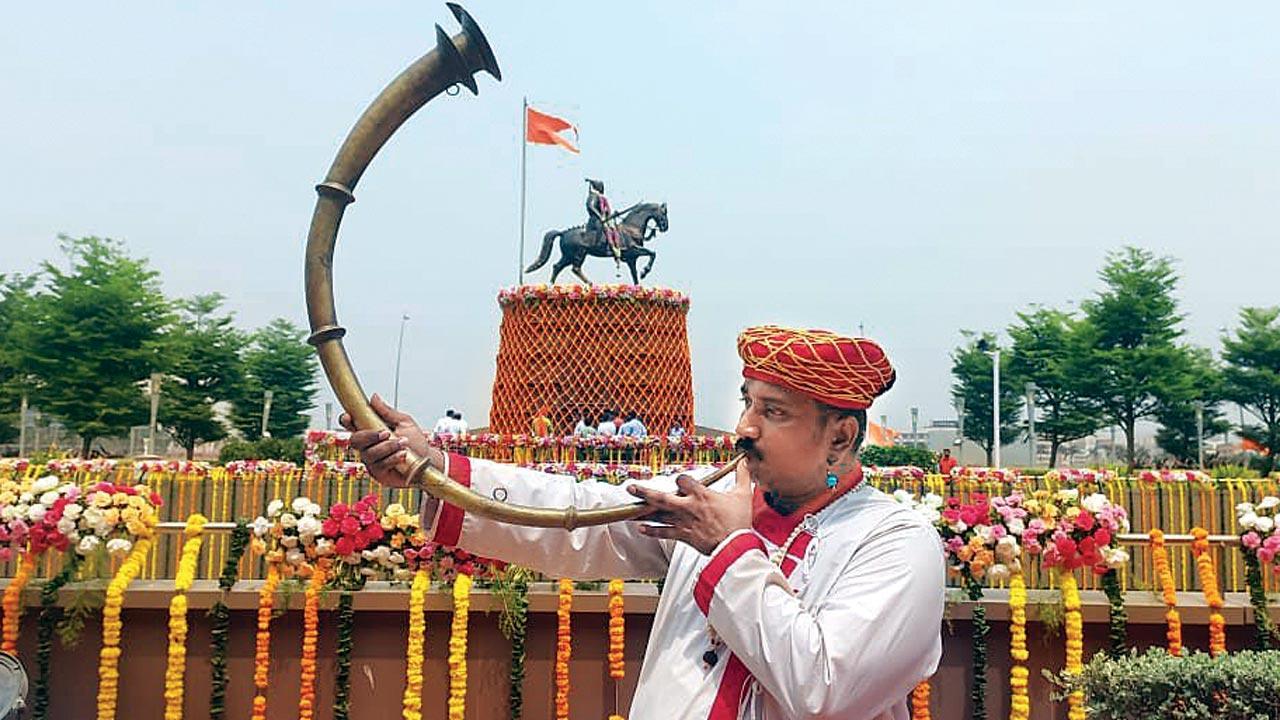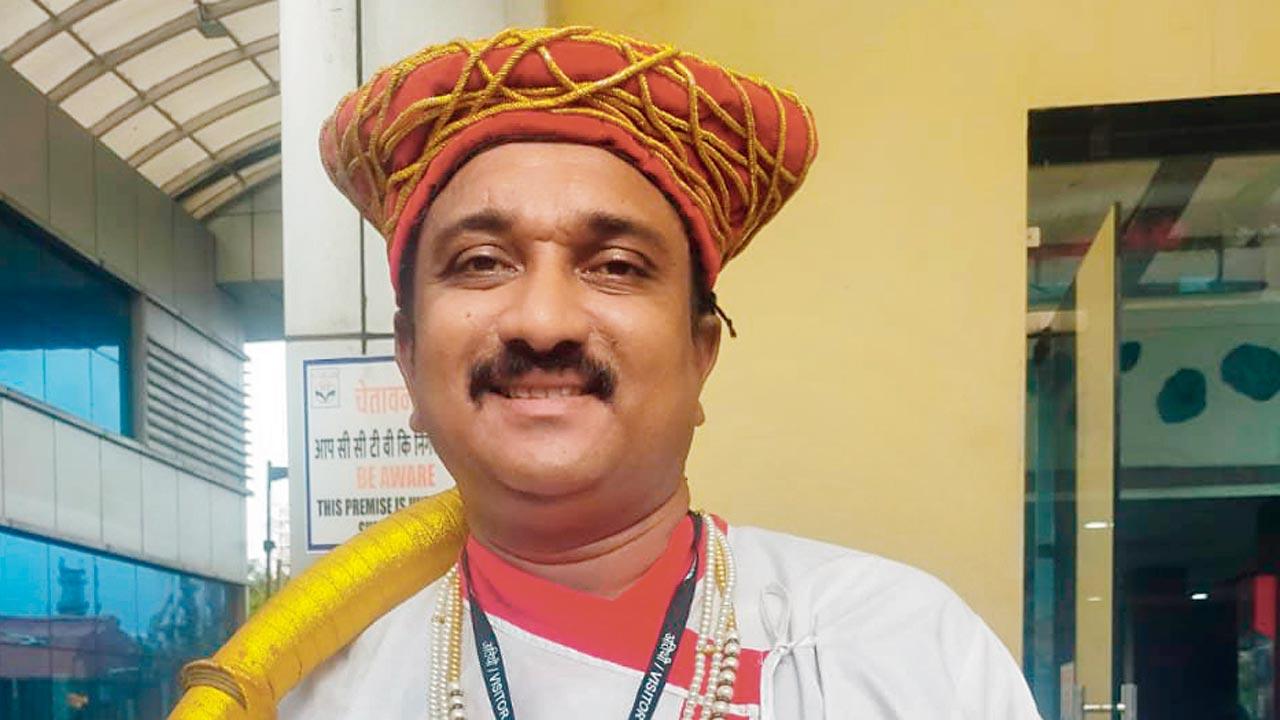A clarion call, an aubade, a blessing, a goodbye—a touch of the divine is essential to play the tutari

Manish Gurav plays a tutari at a political event. The instrument is still played at major cultural and life events such as weddings and death rites
The mass sentiment that the big C-shaped wind instrument just takes some blowing for those sweet notes to follow is nowhere close to what it demanded of Manish Gurav’s ancestors. “It is said that only one person in each generation is blessed with the gift of being able to play the tutari,” says Gurav, who is a part of the Shivkalin Tutari Lok-Kala Mandal in Jogeshwari. The Gurav community is known for their expertise with the instrument and come from cities such as Sangli, Satara, and Sangola in western Maharashtra. The tutari struck a high note after the Election Commission of India approved a man playing the instrument as the symbol for Sharad Pawar’s Nationalist Congress Party.
Legend has it that the tutari was discovered serendipitously: A farmer lost two beloved buffaloes and cut off their horns before cremation to keep as mementoes. As he mourned them clutching the horns, he noticed a small-hole at the end and blew into it curiously. A sonorous series of notes flowed that he learned to manipulate, and passed on to the next generation.
Since then, the humble instrument has provided the background score for many a cultural and religious function in Marathi homes. “Only 30 people from our community in the city truly know how to play the instrument,” Gurav tells us over the phone from Jogeshwari, “It is taught to many people but mastery comes with ancestral knowledge, and a touch of the divine. My father was blessed with the gift, and he passed it on to me. My youngest, who is barely eight years old, has taken to it but his lungs need to be strengthened before serious training starts.”

The instrument requires one to steer clear of the obvious bad habits such as smoking cigarettes, gutka, bidi as well as rigorous exercises vital to regulate and manipulate breath. “We do a particular pranayam that involves placing one end of a straw in a nostril and the other end in a bowl filled with water. We then breathe through the other nostril, while simultaneously blowing bubbles in the water with the other one,” explains Gurav.
The tutari has seven shringas or tunes, of which rajshringha is considered the most revered, connected as it is to Chhatrapati Shivaji Maharaj’s warfare. “During Maharaj’s time, the tutari announced his approach to the fort so that gates be raised promptly, as he was usually pursued by enemies,” Haridas Gurav, Founder, Maharashtra Paramparik Sanskrutik Lokhwadh Tutari Vadak Mandal tell us.
Today, the tutari is played only on occasion. “We are called in to play when statesmen visit the city or at a large political rally,” says Haridas. “The unmistakable tutari lalkar is deeply entrenched in the state’s history and identity. It’s a sound that leaves no heart uninspired.” It is also played at weddings, an aubade for gods, as a community wake-up call, and to request god’s blessing on a village.
In fact, it is believed that unless a gurav plays it at your last rites, the soul is unable to depart. It needs this melodious goodbye.
 Subscribe today by clicking the link and stay updated with the latest news!" Click here!
Subscribe today by clicking the link and stay updated with the latest news!" Click here!










